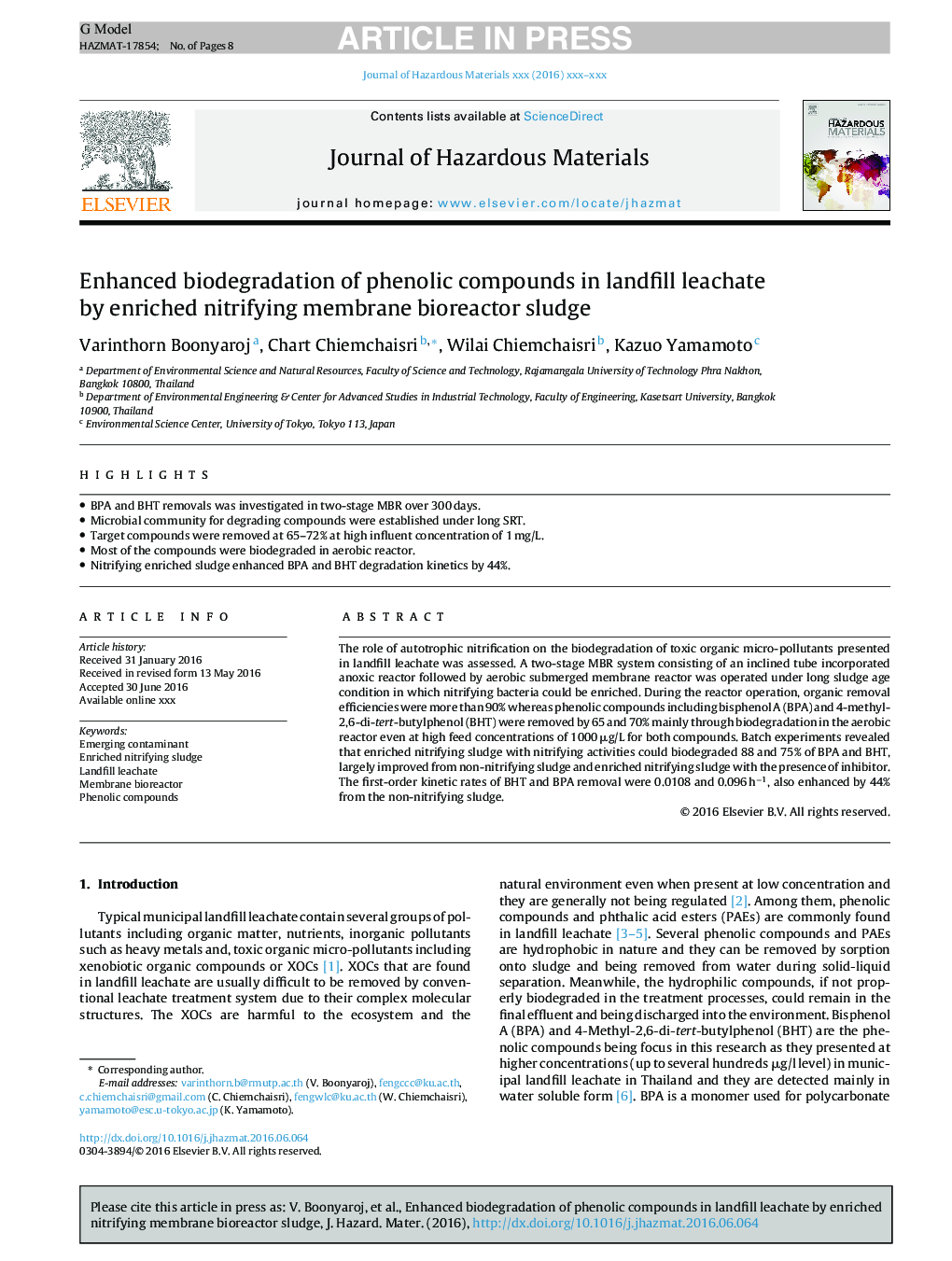| Article ID | Journal | Published Year | Pages | File Type |
|---|---|---|---|---|
| 4979962 | Journal of Hazardous Materials | 2017 | 8 Pages |
Abstract
The role of autotrophic nitrification on the biodegradation of toxic organic micro-pollutants presented in landfill leachate was assessed. A two-stage MBR system consisting of an inclined tube incorporated anoxic reactor followed by aerobic submerged membrane reactor was operated under long sludge age condition in which nitrifying bacteria could be enriched. During the reactor operation, organic removal efficiencies were more than 90% whereas phenolic compounds including bisphenol A (BPA) and 4-methyl-2,6-di-tert-butylphenol (BHT) were removed by 65 and 70% mainly through biodegradation in the aerobic reactor even at high feed concentrations of 1000 μg/L for both compounds. Batch experiments revealed that enriched nitrifying sludge with nitrifying activities could biodegraded 88 and 75% of BPA and BHT, largely improved from non-nitrifying sludge and enriched nitrifying sludge with the presence of inhibitor. The first-order kinetic rates of BHT and BPA removal were 0.0108 and 0.096 hâ1, also enhanced by 44% from the non-nitrifying sludge.
Related Topics
Physical Sciences and Engineering
Chemical Engineering
Chemical Health and Safety
Authors
Varinthorn Boonyaroj, Chart Chiemchaisri, Wilai Chiemchaisri, Kazuo Yamamoto,
